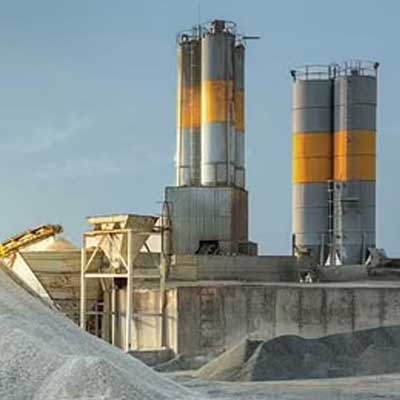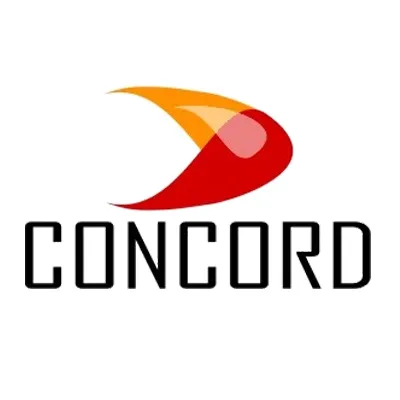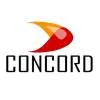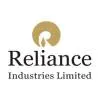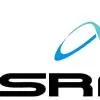The need for sustainable infrastructure, energy efficiency and cost-effectiveness are the key factors driving the blended cement market in India. Cement companies across the globe are using blended cement or SCMs not just to meet government guidelines towards clean energy, but also to improve the workability of fresh concrete, increase strength and enhance the durability of concrete. Most importantly, companies are looking at these options as the best way to cut down their carbon footprint. Before understanding advantages and challenges, let us understand briefly what are SCMs.
Supplementary Cementitious Materials (SCMs)
Concrete is a mixture of Portland cement, sand, aggregate materials, and water. Today most of these mixtures contain supplementary cementitious materials that make the concrete strong and cost-effective. Some examples of these materials are fly ash, slag, silica fume, etc. Most commonly it is termed blended cement or SCM. As per Technavio’s market research report, the supplementary cementitious materials market size is set to grow by $6.3 billion accelerating at a CAGR of almost 6 per cent, during the period spanning over 2020-2024. The key factors driving this growth are identified as -- the increase in building and construction activities, increasing investments in industrial parks and major infrastructural projects, the emergence of environment-friendly cement technology, and most importantly the rising need for sustainable infrastructure. About 54 per cent of the market’s growth will come from APAC regions during the forecast period. China and India are the key markets for supplementary cementitious materials in APAC. Nuvoco product portfolio includes 80 per cent blended cement which means fly ash-based and slagbased. The company intends to continue to produce blended cement and consume fly ash and slag as key alternative materials for cement manufacturing. LafargeHolcim recently introduced ECOPact, which is part of their green concrete range, for high performing, sustainable and circular construction. ECOPact products integrate upcycled construction and demolition materials, further closing the resource loop. The mix is made of cement containing a high portion of what the company calls supplementary cementitious materials. In 2020, Ambuja reduced its specific net CO2 per tonne of cementitious product to 531 kg. To contribute to a circular economy, Ambuja co-processed around 2.75 lakhs tonnes of waste in its kilns and captive power plants including more than 83,000 tons of plastic waste. Overall, it also consumed about 8 million tonnes of waste derived alternative raw materials such as fly ash, slag, and synthetic gypsum in the manufacturing process. Naveen Kumar Sharma, Whole-time Director, Udaipur Cement Works, says, “Our blended cement share in total cement last year was around 80 per cent which helped us to save about 106048 tons of carbon emissions. As of FY 2020-21, we recorded around a 160 percent increase in our utilisation of waste-derived materials since FY 2018-19. Further, we are part of various technical associations that helps govt and related bodies to work on releasing new standards for blended cements.” Broadly, SCMs can be divided into two categories-- hydraulic or pozzolanic. Hydraulic materials are those which react directly with water to form cementitious compounds, while pozzolanic materials chemically react with calcium hydroxide (CH), a soluble hydration product, in the presence of moisture to form compounds possessing cementitious properties. Fly ash and slag are the most common used materials across India. Let us understand each one of them in simple words. In simpler words, fly ash is the remnants of burning coal. It is smaller in size than cement and is finer than Portland cement, and therefore helps in forming a stronger concrete with less permeability. Since less water is needed to make the concrete workable, it maximises strength. Out of all SCMs, the fly ash segment was leading the market in 2019 and was widely used in the construction industry as it offers benefits such as--reduced environmental pollution, lower GHG emissions, and weight reduction of the concrete structure. Slag is similar to fly ash but is finer than standard Portland cement. It is also cheaper as it is a processed byproduct. Simply put, it is produced by the steel production industry when iron ore is melted. Researchers suggest that 40 to 50 percent cement replacement by mass with slag will produce the greatest 28-day strength.
Advantages of Blended Cement Energy efficiency
Energy efficiency: SCMs are alternate materials that are used to replace the clinker in cement grinding, which is usually done through the pyro process. The pyro process is an energy-intensive process as it involves heating of limestone powder up to a temperature of 1400°C and then cooling it to 100°C. When SCMs are used, it significantly helps cement plants to cut down on energy consumption. Also, supplementary cementers can be used to reduce heat generation. They also reduce the potential for thermal cracking in big structure buildings. Most importantly, SCMs can lead to a significant reduction of the carbon footprint of concrete, and hence, cement players are exploring blended cement to achieve sustainability goals. “The clinker manufacturing process is a carbon intensive process because of the carbon released by limestone (CACO3 ) and the energy (electrical and thermal) required in the process. Therefore, CO2 emissions may be reduced by replacing clinker per cent in cement with waste materials like blast furnace slag and coal ash” explains Sanjay Joshi, Chief Manufacturing Officer, Nuvoco Vistas.
Cost-effective solution: Common applications of SCM include filling small cracks, precast and other areas where managing the permeability is essential. Most importantly, when you aim to cut down the material costs of concrete, blended cement could be the best solution. Typically, fly ash and slag are 18 per cent cheaper than Portland cement. If your mix includes 20 per cent fly ash, you may save up to 3.5 per cent on cost, whereas, if you use a 50 per cent slag to cement ratio, you may end up saving 9 per cent of your cost on cement. Udaipur Cement is utilising waste-derived raw materials that are sourced locally (Rajasthan and Gujarat) such as fly ash, chemical gypsum, jarosite, slag, etc. “We are the first cement company in the country to use Industrial Waste – “Jarosite” in a sustainable manner in place of mineral gypsum after permission from CPCB, SPCB, and BIS. Our blended cement share in total cement last year was around 80 per cent which helped us to save about 106048 tons of carbon emissions. As of FY2020-21, we recorded around a 160 percent increase in our utilisation of waste-derived materials since FY 2018-19,” says Naveen Kumar Sharma, Whole-time Director, Udaipur Cement Works.
Strength and durability: Many studies and research papers suggest that fly ash and slag can increase the strength of concrete and reduce permeability. Moreover, it improves the durability of the concrete from the aspects of the alkali-aggregate reaction, sulphate resistance, and reduced heat of hydration.
Concrete performance and the consistency: Studies suggest that concrete with silica fume is cohesive and stickier than plain concrete. On the other hand, fly, ash, and slag reduce the water demand for concrete making. These materials might modify the microstructure of concrete and thus reduces the water requirement. Watertight concrete reduces any form of deterioration such as corrosion, cracks, etc.
Challenges
Blended cement or SCMs adoption is restricted due to few challenges. Some of them are listed below. Logistics and storage: Fly ash has a lower density than Portland cement and may require about 30 percent to 40 percent more storage space when compared to an equivalent mass of Portland cement. The biggest challenge with fly ash is that since it is spherical in shape, it tends to flow quite easily. Storage Bins must be maintained and checked for any kind of flaw that may lead to contamination or loss of material. Proper shut-off valves should be installed to prevent over-batching. Logistics and storage are the most important factors that affect the consumption of SCM at cement plants. To make dry flyash available to users, suitable dry flyAsh extraction and storage silos are required to be installed. Secondly, transporting SCM like flyash requires closed and environment-friendly containers. Many companies have to rely on local suppliers to source SCMs. Udaipur Cement is utilising waste-derived raw materials that are sourced locally (Rajasthan and Gujarat) such as fly ash, chemical gypsum, jarosite slag, etc. The company was the first one to use Industrial Waste – “Jarosite ” in a sustainable manner in place of mineral gypsum after permission from CPCB, SPCB, and BIS. Costing is also another hurdle to be discussed here. Cement companies may have to build concrete silos for storing the fly ash. Similarly, slag can be purchased in bulk or smaller quantities and should be stored in the same manner as cement. Because slag is a hydraulic SCM it should be kept dry to prevent hydration of the material. When these materials gets exposed to moisture, it creates a problem in the process and on the quality of the cement. Hence, cement players need to have a proper infrastructure in place to preserve SCMs so that it gives the right quality of cement.
Guidelines & Policies
Government policies play a major role in helping to cut down emissions of the cement sector. Government agencies like MOEF and CPCB are regularly updating the guidelines for the usage of alternative materials in manufacturing cement. Industry leaders believe that there is a need for a tracking system that can balance the demand and supply equilibrium. “The increasing demand for fly ash and slag in cement plants has resulted in an increase in their prices. A tracking system will also help in keeping an eye on the pricing of these commodities,” adds Joshi. “Outcomes of PAT II indicate that the sector exceeded its energy-saving target by 41.82 per cent, yet this has not been much appreciably considered by Govt in terms of incentivising the efforts. Also, regulations like the Plastic waste management Act are focused on this direction. Still, more actions are required in terms of providing platforms and channels to help the industry aggressively take the low carbon emission path, which is now being taken care of by the present central government,” explains Sharma. He advises that some steps that could help accelerate the SCM adoption level are-- incentivising new innovative technology like CCS, allowing manufacturing and sale of multiple types of blended cement, like in European markets, and encouraging mandatory use of blended cement in projects such as “smart cities” and “housing for all” to the extent possible. On average, 35 per cent of fly ash remained unutilised. This is because the current limit set by the BIS is 35 per cent.
Future potential
With more emphasis on infrastructure development in the country, demand for SCMs will definitely increase. The usage of fly ash and slag-based cement will increase in the housing sector. With more policies, incentives, and strict policies around the utilisation of waste materials, the cement industry can help the nation achieve sustainability targets and make the environment cleaner. When concrete mixtures are logically used alone or in combinations, it can significantly reduce CO2 emissions associated with concrete production.
